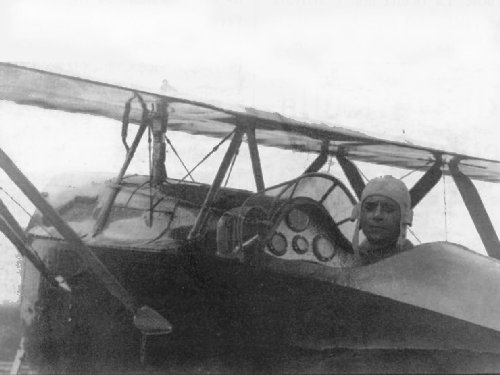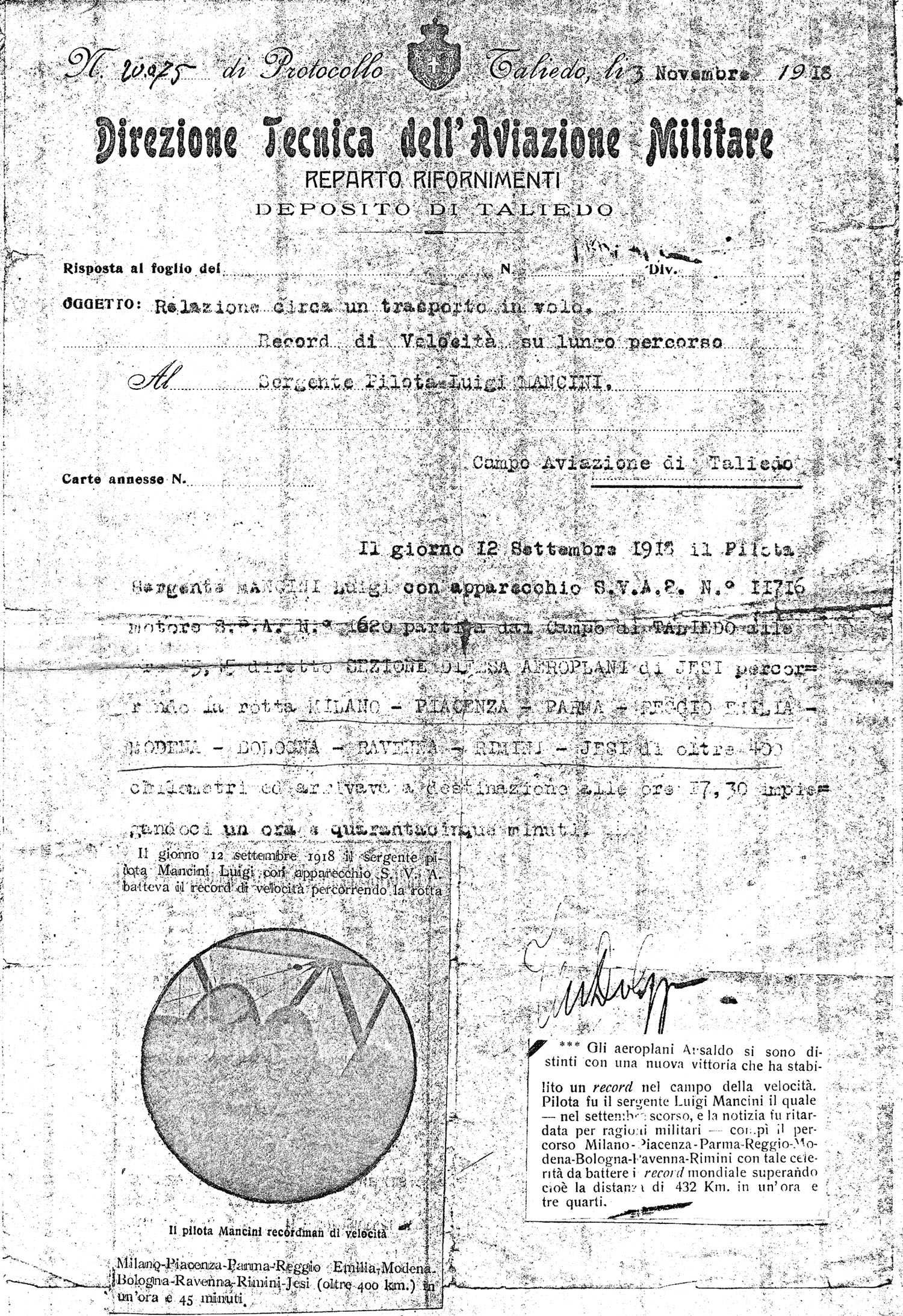|
No. 20,075
Taliedo[1] Protocol
3rd November 1918
Technical Head Office of Military Aviation
Supplies Department
Taliedo Depot
Reply to sheet of
No.
Division
.
OBJECT: Report about a transport in flight
Speed Record over a long route
TO: Sergeant Pilot Luigi MANCINI
Taliedo Air Field.
Attached papers
.
On the day of 12th September 1918, the Pilot, Sergeant Luigi MANCINI
with the S.V.A.P. machine (airplane) Number 11716, motor S.V.A. Number
1620, departed from Taliedo airfield at 15:45 hours directed by the
Aeroplane Defense Section of Jesi, following the route MILAN PIACENZA
PARMA REGGIO EMILIA MODENA BOLOGNA RAVENNA RIMINI JESI of
more than 400 Kilometres and arrived at his destination at 17:30 hours
taking one hour and forty-five minutes to get there.
Signature: indecipherable
On the day of 12th September 1918 the sergeant Pilot Luigi
Mancini with an S.V.A. airplane beat the speed record following
the route

The
pilot Mancini speed record-man
Milan-Piacenza-Parma-Reggio Emilia-Modena-Bologna-Ravenna-Rimini-Jesi
(more than 400 Km) in one hour and 45 minutes.
|
|
Ansaldo* aeroplanes have
been distinguished by a new victory which has set a speed record.
The Pilot was the Sergeant Luigi Mancini who, last September, -
and the news was delayed due to Military reasons finished the
journey Milan-Piacenza-Parma-Reggio-Modena-Bologna-Ravenna-Rimini
with such swiftness that he beat the world record covering the
distance of 432 Km in one and three quarter hours.
Translator's notes:
* The S.V.A. (Savoia Verduzio Ansaldo) aeroplanes were built by
the Societa Ansaldo of Genoa and Turin; they were used by Italy in
the First World War and on into the 1930s.
For a good description with photos and sketches, see:
Fiddler's Green |
Translation courtesy of
Dr. Marion Apley Porreca |

